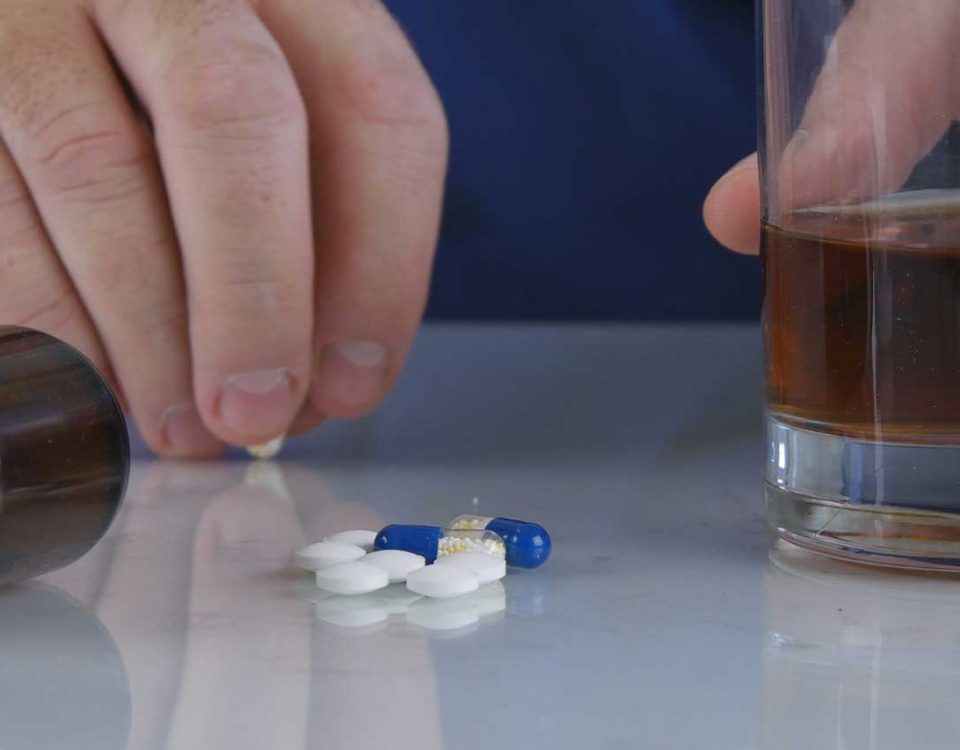Nuncynta is the brand name for the synthetic opioid tapentadol, which is a newer opioid that’s prescribed to treat pain. Nuncynta is available in either capsules or tablets that are taken by mouth. It’s a fast-acting opioid, meaning its effects kick in quickly and dissipate quickly, so patients might be directed to take it several times a day by their doctor.
Tapentadol is considered to have a weak to moderate action, making it slightly safer and possibly less addictive than more common opioids like oxycodone. Even so, tapentadol withdrawal can occur in people who either take the drug as prescribed or abuse it.
What Is Tapentadol Withdrawal?
Tapentadol is a painkiller that’s prescribed for the short-term treatment of severe pain, such as the type caused by an injury or surgery. It’s specifically classified as an opioid analgesic, meaning it reduces patients’ pain by changing how the brain and body perceive and react to pain.
Like all opioids, tapentadol works by attaching to opioid receptors in the brain, which blocks pain signals from the body. At the same time, the opioid activates a region of the brain called the mesolimbic (midbrain) reward system. This system generates signals in another region of the brain called the ventral tegmental area (VTA), which releases the chemical dopamine in the nucleus accumbens.
This release of dopamine in the nucleus accumbens is what leads to a sensation of euphoria, an especially prominent side effect when an opioid is taken in high doses. It’s because of this sensation that opioids like tapentadol have a high risk of dependence and addiction.
Even people who take prescription opioids as directed can develop physical dependence. When this occurs, the individual will experience withdrawal symptoms if they go long periods without taking the drug or if they’re suddenly cut off.
Withdrawal from tapentadol is most common in clients who have taken the drug for long periods. For this reason, most doctors are careful to not prescribe Nuncynta for longer than the individual’s symptoms last. For instance, to prevent a patient from developing opioid addiction after surgery, doctors will begin to reduce the individual’s doses to prevent severe withdrawals once they see the individual’s symptoms subside.
However, in cases when the patient takes higher doses, takes it more often, or takes it in different ways than the doctor prescribed, they’re more likely to develop a strong dependence on and even addiction to tapentadol. In this case, professional services like the medically assisted detox offered at our Texas treatment center may be required to help the individual quit.
Common Tapentadol Withdrawal Symptoms
One of the most common Nucynta withdrawal symptoms is tolerance. When a person becomes tolerant to tapentadol, they may require a higher dose to experience pain relief. This can become a real problem for the individual if they decide to take higher doses of the medication without consulting their doctor first.
A lot of patients don’t understand what dependence is and may think that they simply need to take more pills for the drug to be more effective. This pattern of drug use could not only lead to physical dependence and addiction but may even increase the risk of overdose.
Common tapentadol withdrawal symptoms to look out for include:
- Anxiety
- Diarrhea
- Goosebumps
- Hallucinations
- Insomnia
- Nausea and/or vomiting
- Pain
- Rigors
- Stomach upset
- Sweating
- Tremors
- Trouble breathing
The mechanism behind opioid withdrawal symptoms is a sudden spike in noradrenaline, a chemical that stimulates wakefulness, breathing, blood pressure, and general alertness, among other functions. Opioids suppress noradrenaline, which is why they produce additional side effects like sedation, drowsiness, and sometimes respiratory problems.
After a long period of taking tapentadol, the body is accustomed to remaining in a generally relaxed state where noradrenaline is suppressed. During withdrawals, this chemical is no longer suppressed, which can lead to a spike in certain functions.
Furthermore, the tapentadol withdrawal timeline varies depending on how long the person had been taking it and the doses they would normally take. The longer the period of use and the higher the dosages, the more uncomfortable and long-lasting the tapentadol withdrawal duration.
Nucynta Withdrawal Treatment
If you or someone you care about is dependent or addicted to opioids like tapentadol, our opioid detox in Waelder can help. Our Banyan rehab in Texas incorporates medically supervised care along with psychotherapy to address both the physical and psychological stages of addiction recovery.
We understand that recovery is an ongoing process, and starting on the right foot is key to building a solid foundation. For more information about our opioid addiction treatment and how to get started, call Banyan Treatment Centers today at 888-280-4763.
Related Reading:









